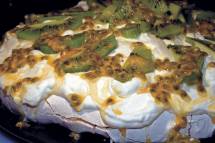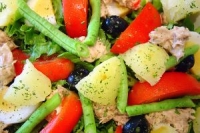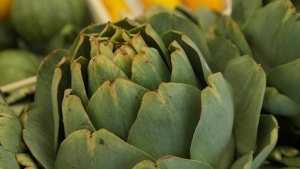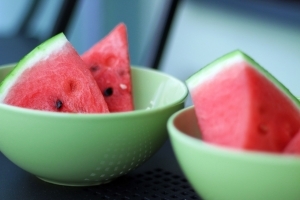Pavlova
Author of Kiwi Food Culture – flavours from around New Zealand, published by Bateman Publishing.
There is no better way to round off the classic Kiwi dinner than with the delightful taste of a pav, with its combination of textures from the crack of the meringue to the soft marshmallow-like centre.
Cook’s tip: One of the keys to baking a successful pav is to make sure all utensils and bowls are squeaky clean and no eggshell or yolk ends up in the mixture.
(Serves 6)
 Ingredients
Ingredients
- 3 egg whites
- 1 cup caster sugar
- 1 teaspoon white vinegar
- 1 tablespoon cornflour
- 1 teaspoon pure vanilla extract
Topping
- 600 ml fresh cream, whipped
- 4 ripe passion-fruit, seeds & juice
- 4 kiwifruit, skinned & sliced
Method
Preheat the oven to 150°C.
Beat the egg whites until soft peaks can be formed. Add the sugar a little at a time, continuing to beat well after each addition, and then until all the sugar is dissolved and stiff peaks can be formed. Then sprinkle the vinegar, cornflour and vanilla essence into the mixture. Beat until blended.
Place baking paper on a tray and make a round shape with the pavlova mix. Some people like to use a tin, but most prefer the more organic free-form.
Immediately the pavlova is in the oven, reduce the temperature to 125°C and bake for 1 hour. Turn the oven off, but don’t take the pavlova out until it’s totally cooled. Leaving it overnight is okay.
Before serving, cover the pavlova in whipped cream and decorate with passion-fruit pulp and fresh kiwifruit.
Stephen Morris’ wine notes
So Kiwi, so sparkling sauvignon blanc – but a sweeter style, Darling Wines (moscato inspired) 2010, Marlborough. May be hard to find – but look on line – just a lovely light 9% alcohol, a fresh herbal sauvignon blanc nose but a creaming soda sweet soft taste.
Muscat Beaumes de Venise, France. The youngest you can find 2009-2010 are both available. The Paul Jaboulet 2009. Fruit flavours – melon, peach – all clean sweetness without heaviness or stickiness.


